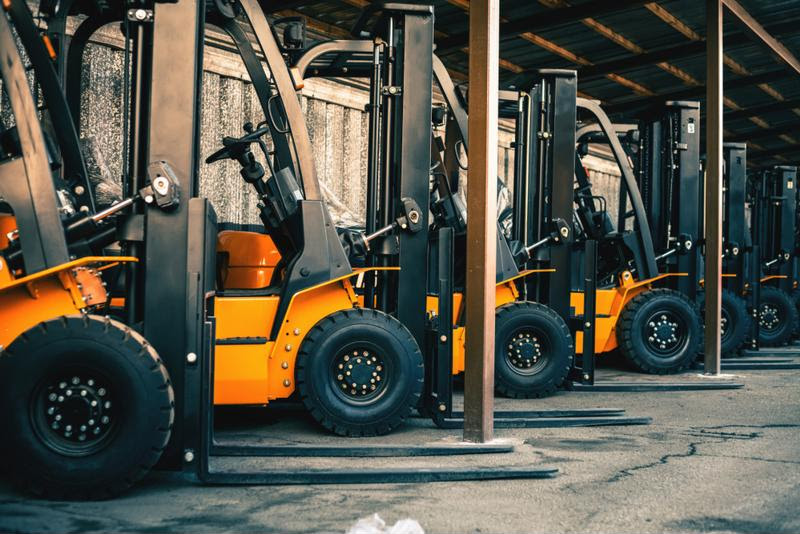Safe Forklift Operations: Essential in Any Warehouse

What does it take to keep your forklift operators safe and prepared for any potential problems?

What should all forklift operators know?
The Occupational Safety and Health Administration has specific rules for the safe use of forklift equipment, with operators subject to strict requirements. This careful management of forklift driving is due to the potential for serious injury around such heavy machinery. The strategies for your warehouse should go beyond OSHA’s baselines and ensure every employee in the environment knows the proper procedures. Both forklift operators and all other employees who work around these vehicles should be aware of the possible danger they’re in and understand how to stay safe.
The need for safer operation is clear, and the numbers are striking. Safety + Health Magazine pointed out relevant government accident statistics: OSHA found 35,000 serious injuries at U.S. companies every year involve forklifts, while 96 workers died in U.S. forklift incidents in 2015.
OSHA’s Forklift Requirements
OSHA’s materials on safe operation of forklifts, a class of vehicles also known as powered industrial trucks, acknowledge that the equipment in question will vary from one workplace to the next. Motorized, open pallet lifters that employees drive while standing up are categorized as PITs, as are full-size sit-down forklifts. In addition to taking forklift type into account, you will have to consider the conditions the vehicles will operate within. OSHA noted using forklifts in retail spaces brings a far greater risk of pedestrian harm than using them at construction work sites.
Though there are numerous accidents to watch out for when operating a forklift, OSHA noted the most fatalities around these vehicles are caused by overturned trucks or forklifts falling off of loading docks. The agency also noted there is a prohibition against young operators driving forklifts – no one under 18 can drive a PIT, which is an especially relevant consideration in industries hiring students as temporary workers during the summer months.
Numerous workplace conditions affect the safe operation of vehicles, and OSHA offers reminders about several of these risk factors. From the physical layout of the space and the likelihood of pedestrian traffic to the kinds of ramps, inclines and loading docks present, there’s plenty to think about and plan around. If your warehouse involves narrow aisles, enclosed spaces or elevators, it’s best to consider them specifically when creating policies around PIT use.
 What is the key to safe forklift use?
What is the key to safe forklift use?Staying Safe Via Training
The cornerstone of your workplace’s forklift operation policy will inevitably be training. Everyone who works on or around these vehicles should be aware of every requirement, practice and contingency. Safety + Health Magazine pointed out that OSHA-compliant training operations must include multiple materials, with formal instructive segments combined with practical, hands-on work. Employees are evaluated in action to determine whether they’re ready to use these vehicles safely.
There are no exceptions to the rules – everyone who drives a forklift should complete the related courses and pass the evaluation. While using a light PIT in a warehouse may not feel like driving a truck, OSHA compares the two in its workplace training guide. Performing either activity without a license is risky and can lead to serious or fatal consequences.
Drew Kertzman from the Washington State Department of Labor & Industries told Safety + Health that employees who have finished their training should not grow complacent, especially if they are using new types of vehicles. Though forklifts are sorted together as one class of equipment, the feel of handling a large PIT can be very different from driving a small one, and it’s easy to see how an operator adapting to new circumstances could suffer a workplace accident.
Courses for Forklift Operators
Just as there are numerous kinds of PITs and workplaces where you may find these vehicles, video training courses on safe operation cover a variety of topics. Drivers will learn essential facts and best practices in these videos, including the proper way to balance a load, how to refuel or recharge a vehicle correctly and what to do when the PIT needs maintenance. Operators shouldn’t just monitor their own performance: Before they start their vehicles, these employees should inspect them to ensure everything is in working order. There are courses that deal with this step of the process as well.
Forklifts are ubiquitous parts of the modern warehouse because they are the quickest and easiest way to shift large loads, and it’s hard to imagine loading and unloading without them. Despite their common nature, you should never take forklifts for granted. Getting training for every worker who drives a forklift in the workplace is the law, and more than that, it’s an essential part of ensuring everyone gets through the day safely.
Source